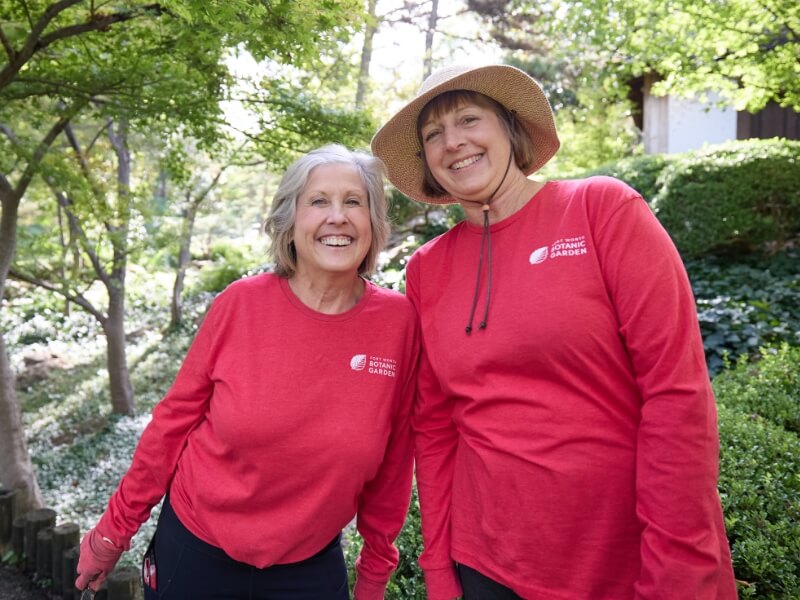History of the Library
Lloyd H. Shinners’ Vision of the Future
In large measure, the library of the Botanical Research Institute of Texas owes its existence to Lloyd H. Shinners and his vision of the future. He was an impassioned bibliophile and shared books and his views on books with many of his friends and professional colleagues. Dr. Shinners was not just a book collector. He selectively chose those books that were the most important to research in systematic botany. It is a library assembled with care and with an intimate knowledge of each work chosen.
Accepting an appointment as Research Associate at the Milwaukee Public Gardens, he was recommended by Cyrus L. Lundell, Director of the Institute of Technology and Plant Industry, SMU, to become a Research Fellow in Systematic Botany. The appointment was approved in February of 1945.
Following his appointment, Lundell instructed Shinners to prepare a complete list of books needed for his research on the Compositae (sunflower family). The library at the university was limited and older reference works were especially lacking. Outside funds had been obtained for such purchases by Lundell.
Before coming to Dallas, Lundell suggested that Shinners visit Chicago and St. Louis to check the material in those herbaria for specimens he might be able to use in his study of the Compositae. Shinners went to the Gray Herbarium at Harvard and then to the Bailey Hortorium at Cornell where Liberty Hyde Bailey was a preeminent horticulturist. Lundell was trying to assemble a set of Bailey’s publications and had the money to purchase any out-of-print articles or rare reprints which might be available. His responsibilities at the SMU Institute of Plant Industry and Technology included organizing the library, herbarium, and unmounted specimens.
Shinners was able to travel to other institutions in his quest for library materials to support his research on the Compositae, although such activities were severely limited by other staff. While at the Gray Herbarium he had some photostatic copies made of some important botanical volumes. This was a new process which had just become available after the end of the war. Some of the titles he selected included Jacquin’s Enumeratio Systematica Plantarum, L’Heritier’s Stirpes Novae, and Bentham’s Labiatarum Genera et Species.
The books arrived that Shinners had felt necessary research on the Compositae. Dr. Humphrey Lee, President of SMU, had to approve the special purchase of publications which Shinners had ordered from Antiquariat Junk in the Netherlands. When they arrived in September of 1946 the total bill was $6,092.92. This was nearly three times Shinners annual salary. In 1947, Shinners was promoted to Assistant Professor of Biology for the academic year of 1947-48. His salary for that position was $1,600.00 for half time. The other half time to be in the herbarium on a twelve month contract for $1,600.00.
Move into the New Fondren Science Building – Attic
The Biology Department began preparations to move into the new Fondren Science Building in 1950. But no provision had been made for the herbarium in the new building, nor for the card indexes and books temporarily stored in the library, nor for Shinners’ personal library nor any of its staff. Shinners was the only tenured professor for whom no office was allocated. In the end, the attic of Fondron was adapted for the herbarium and an office was created for Shinners from a small graduate student room. The other staff remained in Perkins Hall.
Shinners stated that due to the rising costs of subscriptions, new books, and missing back volumes of incomplete sets, accessions in the form of out-of-print books had been almost exclusively in the form of gifts. And, to a large extent, those gifts came from Shinners himself. The extent of Shinners gifts were staggering in their scope considering that his salary was merely $3,200.00 a year.
Between 1945 and 1947, he presented about $2,000.00 worth of books on botany, zoology, and American history.
In 1950, he gave subscriptions to three scientific journals and 47 volumes including eleven nineteenth-century works.
In 1958, two hundred and eighty titles were added, worth $1,800.00
In 1959, $1,200.00.
In 1960, $1,310.00.
He planned to increase the holdings of the library in plant systematics although it already “ranked number one in the South and Southwest in this regard.”
Carousel items
-
Collections Insights
Collections Insights brings together three distinct perspectives that reflect the depth and richness of botanical collections—from the relationship between herbaria and libraries to the hidden treasures of archival holdings, and the personal narratives of those working in the field.
-
The Sherwin Carlquist Collection
The Sherwin Carlquist Collection encapsulates more than 30 years of important botanical research conducted by the renowned mid-century American botanist.
-
The Oliver G. Burk Children’s Collection
The Oliver G. Burk Children’s collection is a treasure of both rare and new books on botany and natural history.
-
Library Archives Collection
The BRIT Library houses one of the largest and finest collections of botanical works in the southwestern United States.
-
Rare Book Room Collection
The Discovery Fund Rare Book Room includes an exceptional collection of books and limited-edition items, some of which were published over 200 years ago and are fragile, scarce, or valuable.
-
The Arader Natural History Collection of Art
As one of the newer additions to the Library, the Arader Natural History Collection of Art celebrates art, science, and the beauty of plants and nature.
-
The Stansbery Collection for Botanical Art
Through the generosity of Will and Kay Stansbery, the BRIT library offers access to a collection of books focusing on botanical art and illustration, and art history.
-
Discovery Resources
Explore a curated collection of educational and digital resources from the BRIT Library and beyond.
-
Participate
In a world of increasing demands and shrinking dollars, you can also support our mission by sponsoring specific resources and preservation efforts.


